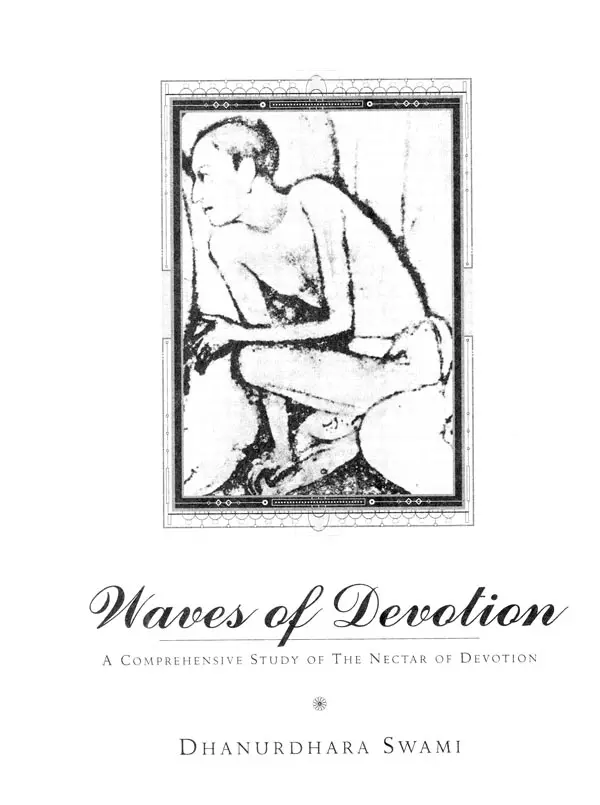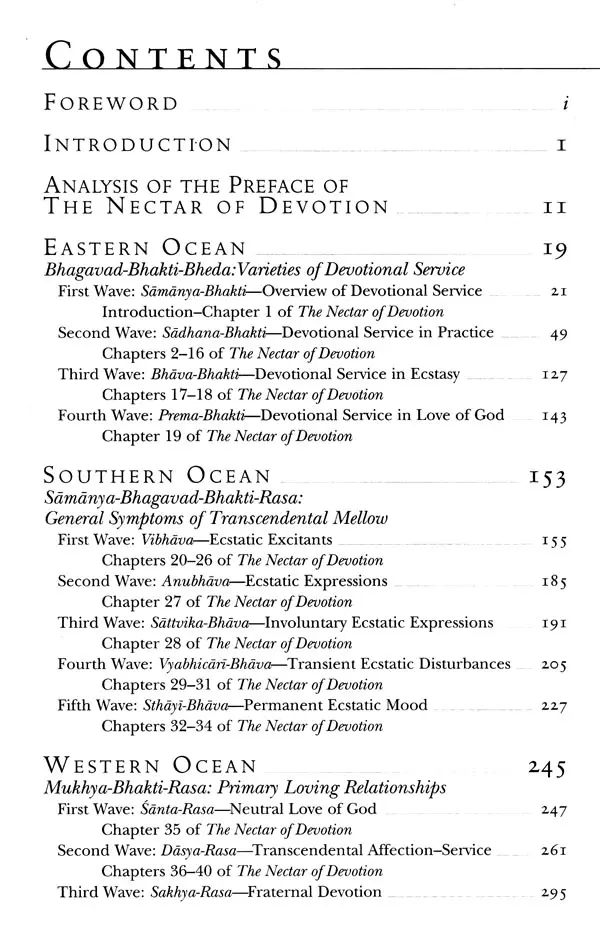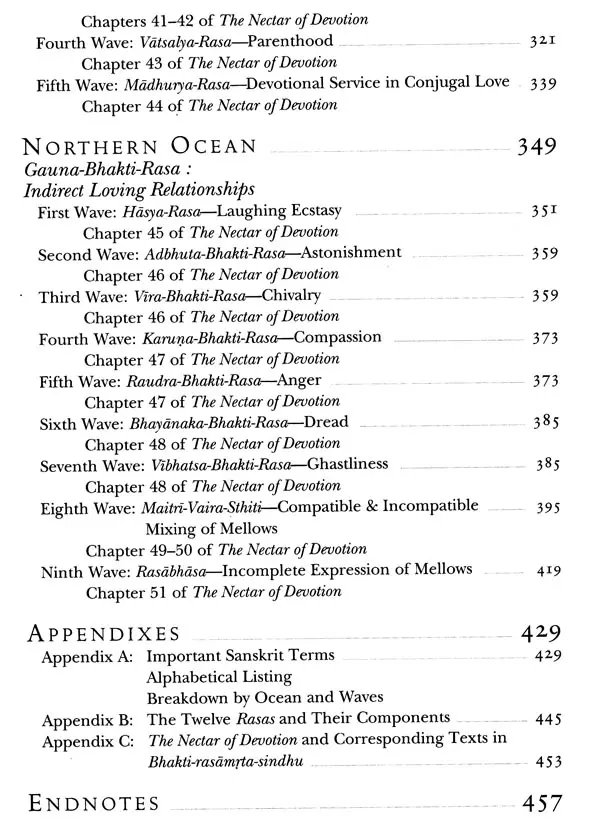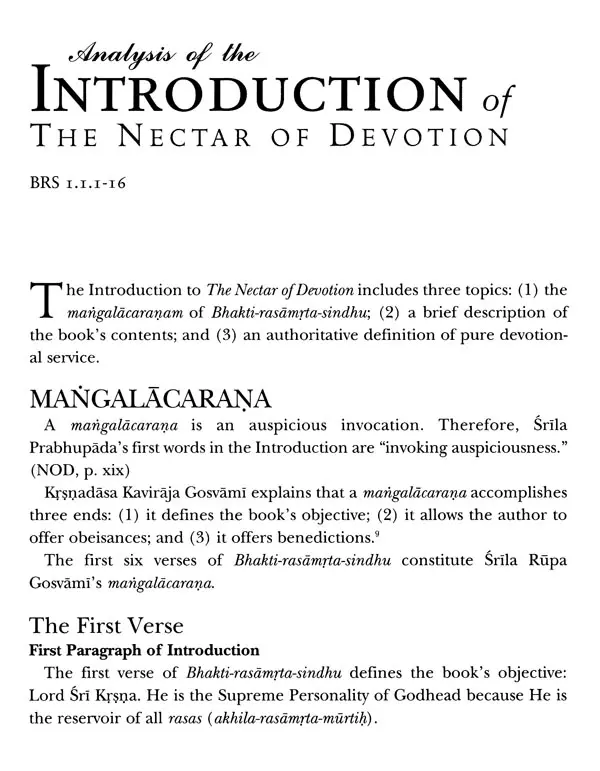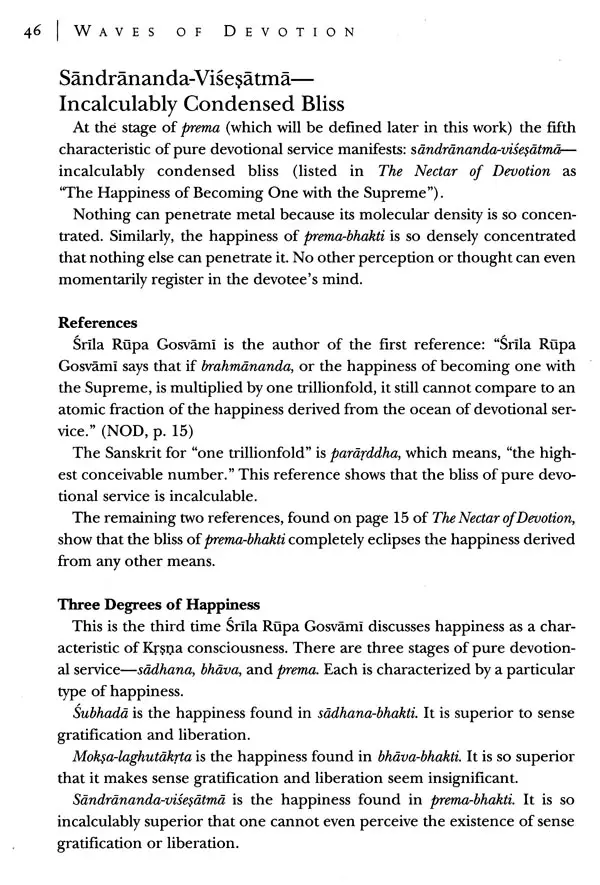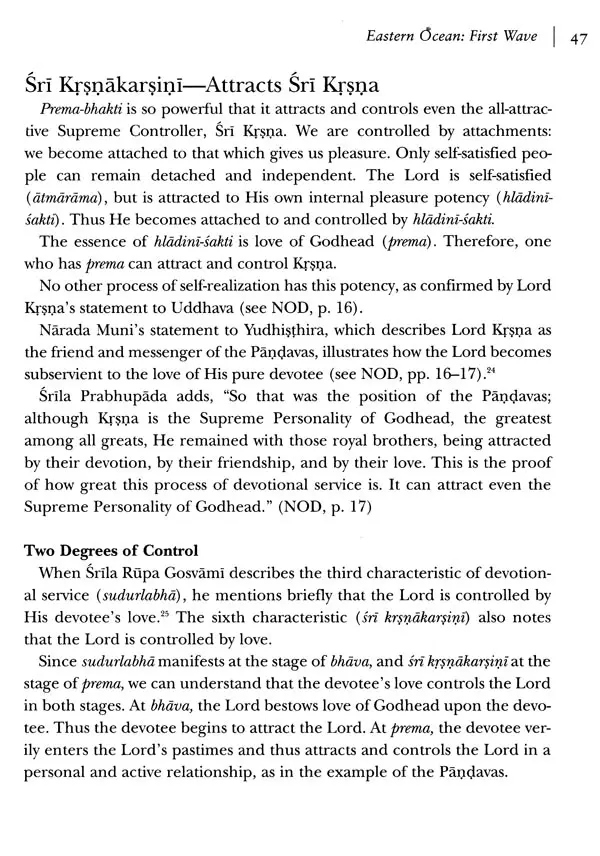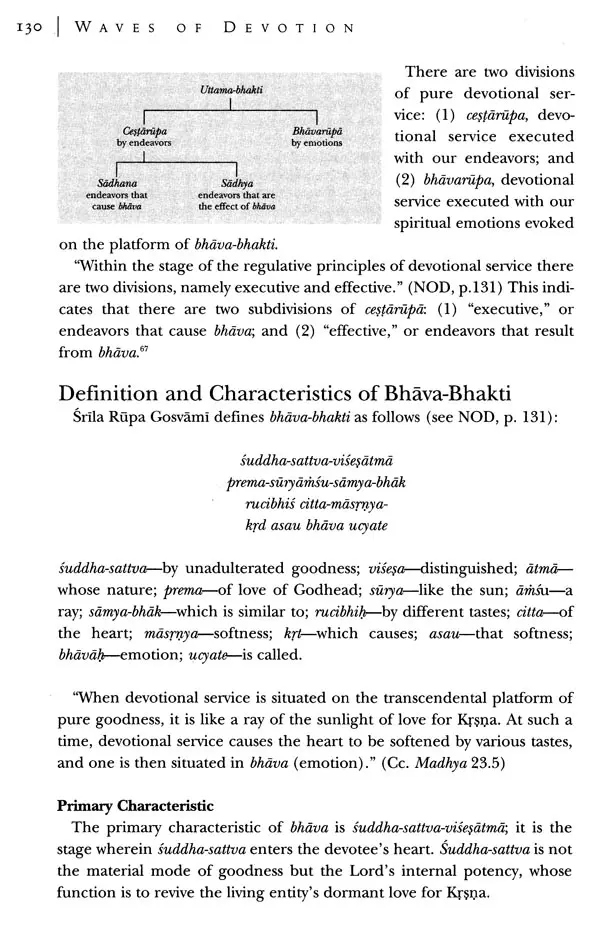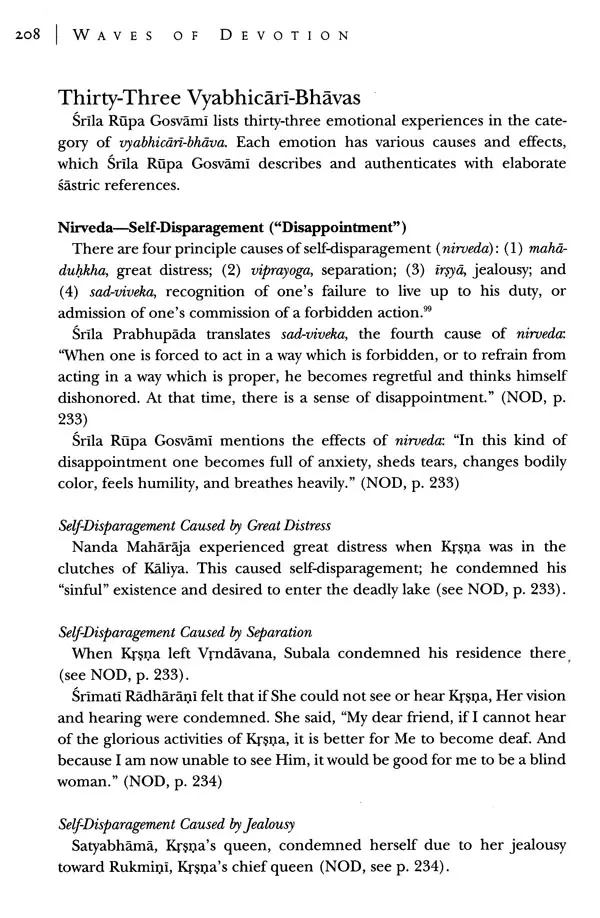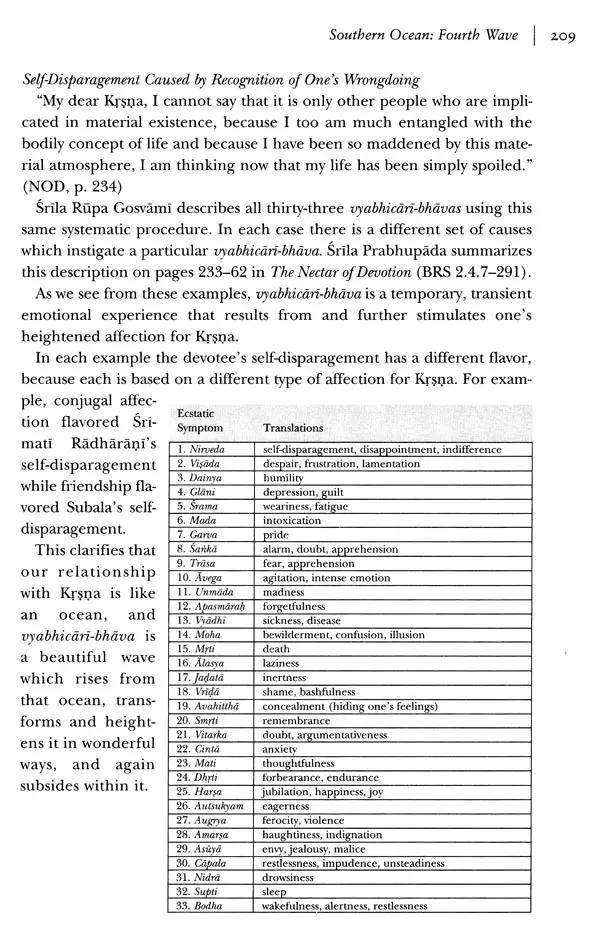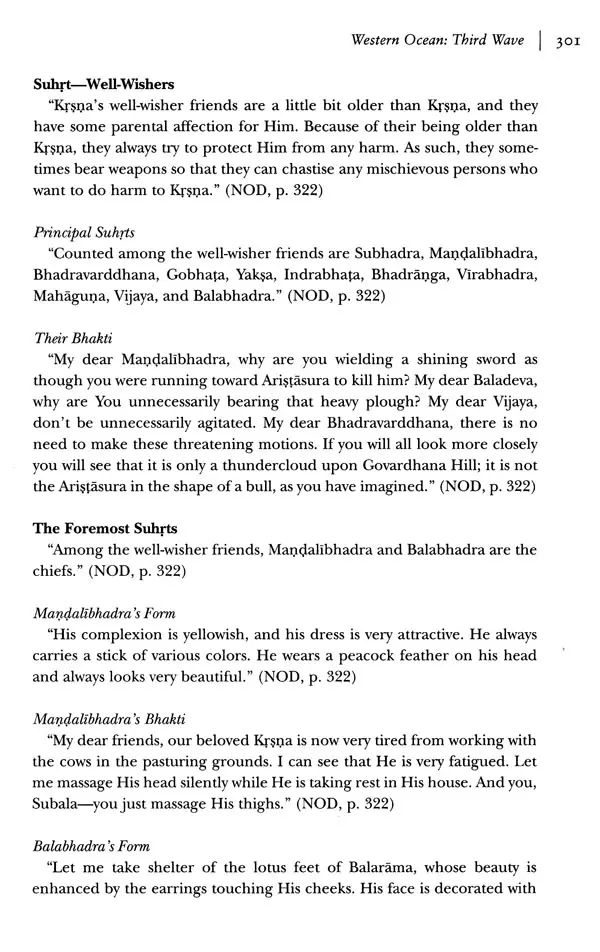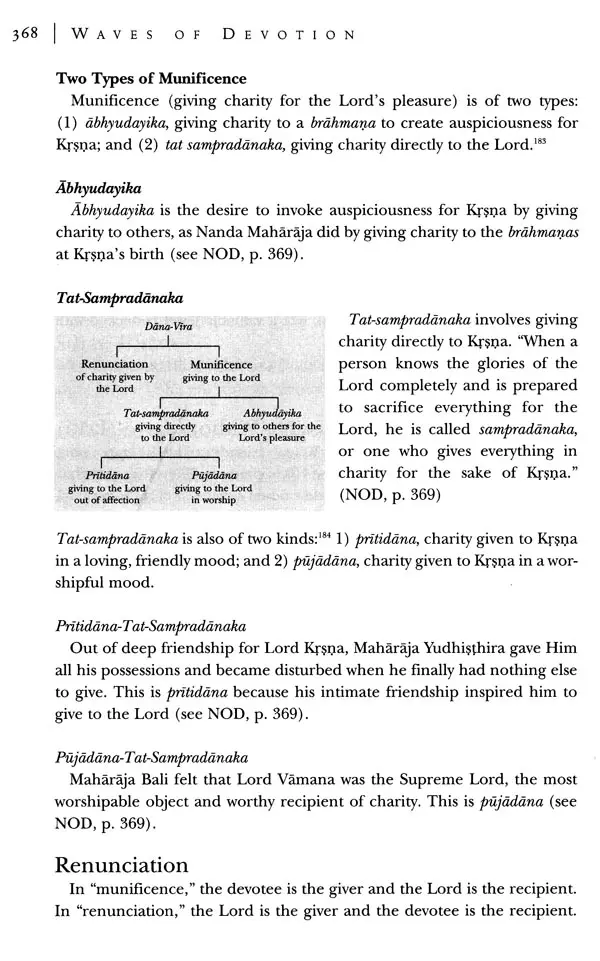
Waves of Devotion (A Comprehensive Study of The Nectar of Devotion)
Book Specification
| Item Code: | UBD671 |
| Author: | DHANURDHARA SWAMI |
| Publisher: | The Bhaktivedanta Book Trust |
| Language: | English |
| Edition: | 2000 |
| ISBN: | 9780970358103 |
| Pages: | 475 |
| Cover: | HARDCOVER |
| Other Details | 9.50 X 6.40 inch |
| Weight | 800 gm |
Book Description
WITH SOME EXCEPTIONS, Srila Prabhupada at least briefly summarized every verse in Bhakti-rasamrta sindhu. Consequently, I was able to solidly the present book on his authoritative statements. Therefore we have entitled the book Waves of Devotion.
Waves are born from the ocean, heighten the ocean, and then merge within it. Similarly, the explanations in Waves of Devotion are born from statements in The Nectar of Devotion. They further explain Srila Prabhupada's statements and therefore expand them. Finally, after hearing these explana- tions one will find the very same points in Srila Prabhupada's own statements. Waves of Devotion will then merge within the ocean of The Nectar of Devotion.
Waves are not just born from the ocean, their very existence depends upon its support. Similarly, every comment in Waves of Devotion is authorized by and depends upon a corresponding statement from Srila Prabhupada's The Nectar of Devotion.
In this world, there are three major oceans-the Indian, the Atlantic, and the Pacific Similarly, for me, there are three oceanic books on the science of devotional service, books that clearly delineate the "waves of devotion" according to the teachings of Gaudiya Vaisnavism The first of these three books is Rupa Gosvami's Bhakti-rasamyta-sindhu.
("The Ocean-like Nectar of Devotional Relationship"), a sixteenth-century Sanskrit classic" that analyzes the various stages of bhakti (devotion) as a methodical procedure resulting in love of God. Sri Rupa extends the metaphor of an ocean and its waves (used in the title and throughout the work) to include rasa (devotional relationship), which is envisioned as a liquid. Rasa is thus often defined as "juice," "taste," or "flavor." poetically indicating that it is delectable or thirst quenching. The idea is that the spir- itually thirsty can develop their relationship with the Supreme by drinking from its unlimited reservoir.
Krsna, or God, is seen as the akhila-rasa-ampta-murti, the perfect embodi ment of all rasas. With this as its central theme, the Bhakti-rasamyta-sindhu explains how to develop all emotions in relation to Krsna, culminating in srigara-rasa, the mood of conjugal love, which was most perfectly embod- ied by the gopis (the divine cowherd girls of Vraja) Examples of how this is so is found throughout Sri Rupa's work.
Since The Nectar of Devotion is already the commentary' of a self-realized soul, what is the need to comment on it at all? Srila Prabhupada him self said that his books were written not by him, but by Kropa. Thus aren't they already perfect?
The Vedas emanate directly from the Supreme Lord's breathing. Still, they are understood with the help of a teacher: acaravan puruso veda. Like the Vedas, Srila Prabhupada's books are transcendental sound vibra tion (sabda brahman). Thus the same principle holds for them: they become more accessible through the aid of a teacher.
Commenting on Srila Prabhupada's books is not unprecedented in ISKCON. A simple example is our daily Srimad Bhagavatam class, which Srila Prabhupada himself instituted. Again, the principle of acaryavan puruso veda is at work: learning from erudite Vaisnavas deepens our com prehension and appreciation of Srila Prabhupada's books.
I'd like to briefly share my personal experience of how essential it is to learn Srila Prabhupada's books from a teacher.
Every year, from 1986 to 1997, I would teach a five-month course on Bhagavad-gita. This rigorous course required that I was capable of analyz ing each verse in context of the various themes and sub-themes within and between each chapter.
Book's Contents and Sample Pages
